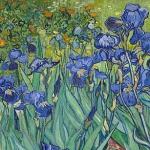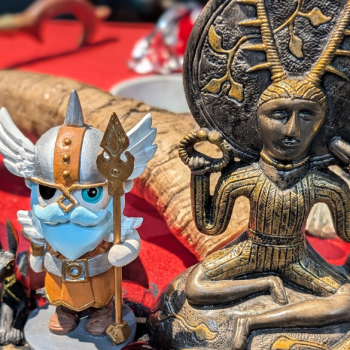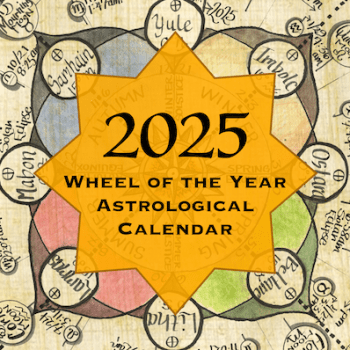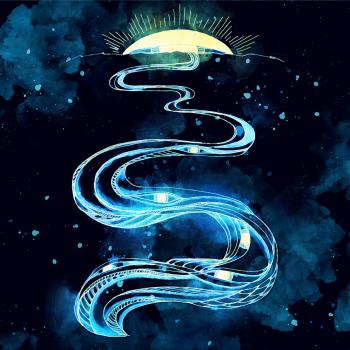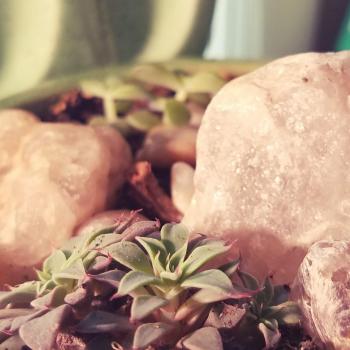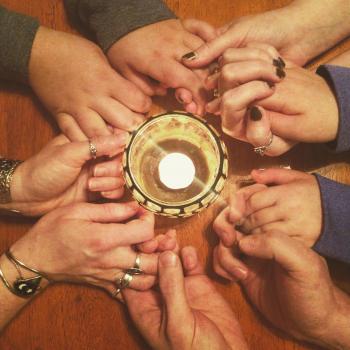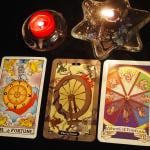The other day on one of the ADF forums I was tagged in a post and a member said that I was their “spirit animal”. It was super sweet and meant in the best of ways. I was really complimented. Another member commented that Native tribes have specifically asked that people not use that kind of terminology, and it’s true. I know they have. In the moment I weighed the importance of accepting a compliment in the manner it was given to be more important that respecting that terminology. To me, it was a judgement about reciprocity, being a good guest in other’s lives, and the audience. However I’ve had that kind of thing come up again and again in my priestwork and I thought I’d take some time to address the issues from a Euro-diaspora religious pagan perspective. I cannot speak for other indigenous and diaspora religions such as Santeria or Shintoism.
Here’s some questions that have come up:
- Should pagans use the word totem?
- What about “spirit animal”?
- Are there spirit animals in Euro traditions?
- How do we interact with animal and plant spirits in ways respectful to other traditions?
- How do we interact with animal and plant spirits in ways respectful to the spirits themselves?
Let me answer these in turn.
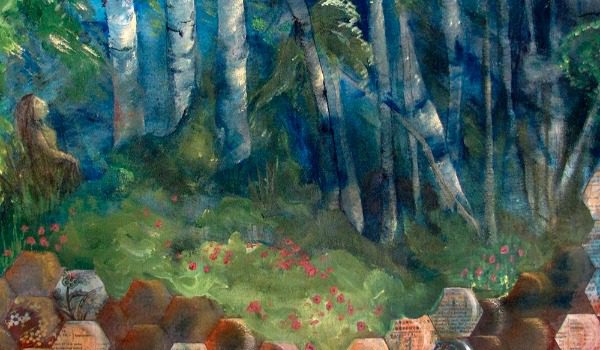
Should pagans use the word totem?
TLDR: Nope.
Like the word “shaman” it has a specific cultural meaning that was stripped away by anthropologists in the western cultural tradition in the last couple of centuries. Originally the concept with that word comes from a couple of different North American indigenous tribes, including the Ojibway tribe in the Midwest and the Haida and Tlingit tribes in the Pacific Northwest. What that means is that the word itself has a specific cultural meaning and tradition associated with it. Because anthropologists from the western cultural tradition (and yes I know that is an obnoxious mouthful, but all those words are important, darn it!) didn’t consider that they had words for spirit animals that are aligned with or represent a group or an individual in a spiritual way they took words from other cultures. This happened with the word “shaman” too, which originally was a name for a specific kind of spiritworker from Asia. Note how I’m not using words that aren’t in English for these concepts. Spiritworker versus Shaman. Animal Spirit versus Totem. We need to come up with our own words, from our own traditions and not just be lazy and steal other’s cultural work.
What about “spirit animal”?
TLDR: maybe.
Now I just used spirit animal and animal spirit in the paragraphs above, how can I say maybe?! I did it, so it’s fine, right? Well… there’s context involved and the answer is a little more difficult in my opinion. These are English words, so that’s good, we’re not borrowing from a culture that was damaged by the Western Traditions. But are we borrowing the concept? Maybe. I know that there are tribes that have asked that people please stop using the concept of saying a person (mostly a famous person) is their spirit animal. I’ve done it myself. I like to say that the red panda character from Kung Fu Panda is my spirit animal. Because of that I’ve used terminology like “Dustin Hoffman is my spirit animal.” That moment when his ear is twitching because he’s trying to meditate and Po is driving him insane in his brain? Yeah. I get that a lot. I feel that in my soul. But is he really my spirit animal? No. He’s not. I do have spirit animals, and we’re going to be getting into the various kinds and way I interact with animals spiritually, but honestly, Dustin Hoffman is not really one of them. I’ve decided to stop using the terminology in that context because it’s not really true. It’s just me trying to blend with the majority culture. I’m a grownup and I can watch my words more carefully in order to be respectful. So in the end, that’s why maybe is the answer. Am I actually using “spirit animal” in a true and authentic way? Then yes, I use those words. Otherwise, the answer is no.
Are there spirit animals in Euro traditions?
TLDR: Yep!
There are a lot of examples of various kinds of animals in spirit form. By this I mean animals that either interact with humans in mythological ways, or ways that are non-normal (what we might term supernatural, but frankly I think it’s all perfectly natural and that’s not a useful term) or as teachers or guides, or as an aspect or representation of self, clan, group, or nation. So that’s a lot of ways, and I’ve probably missed a few! I will get into more specific examples as we go and start to deconstruct the terminology and ideas.
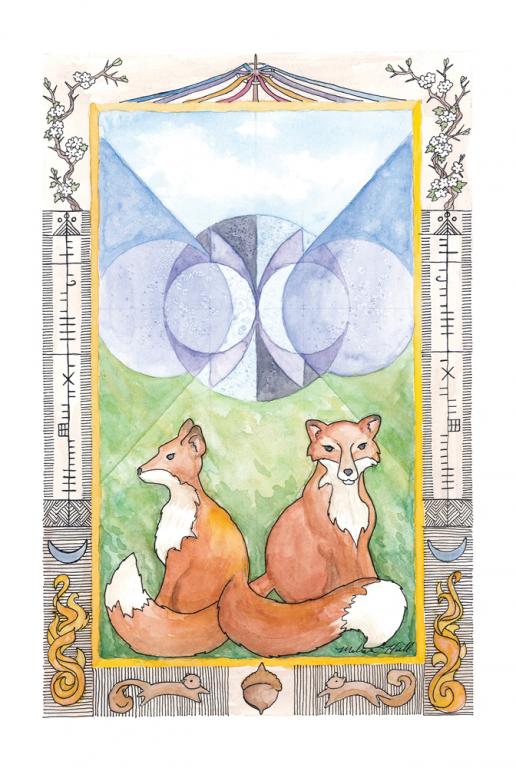
How do we interact with animal and plant spirits in ways respectful to other traditions?
I’m not going to give you a TLDR on this one, because the answer isn’t too long, and it’s also found in the information above. We do it through our own cultural lens. Most of us in America speak English as a primary language and are rooted in the Western Cultural Traditions. That means we need to take the time and effort to figure out how to relate to the land, plants, and animals we live with from the cultural lens of the traditions that are our own. We do the research into authentic folklore and mythology. We take the time learn about local ecology, local species, and local places. All this takes more time and effort than just buying a wolf tee shirt because it’s cool or saying that we have an inner thunderbird. (Never say you have an inner thunderbird. I’m pretty sure that’s a Bad Plan.)
How do we interact with animal and plant spirits in ways respectful to the spirits themselves?
TLDR: by doing the work.
Now we finally get to talk about the different ways to interact with animal spirits, pulling on my own experience and research. We needed to talk about all that other stuff first, dear reader, so that I could give you the context that I do this work in. Context is important, as are the words we use. Words are Power, and by defining them carefully we can stand strong and with honor. Onward!
Internal versus External
I see this as one of the primary divisions in how we relate to animal and plant spirits. Internally we interact with these spirits as an aspect of self, such as a fylga or berserker. We shapechange into these forms or animals when we do trance work or in ritual or magical work in the mundane world. This first way is like the berserker in the Norse tradition which translates as “bear shirt” and was used for warriors who would go into a wild and primal trance state where they had the power of the bear in battle. There were also wolf warriors referred to as wolf coats. I have mostly studied the swan shapeshifters, which can be valkyries like Svan-white, they can be queens like in the Lithuanian folklore, or children of gods like in the story of the Children of Lir in Irish legend. When mortals take on another form they very often have a garment that gives them the power to transform.
I have found in my own experience that when I go into trance, I do shapeshifting work quite naturally. I often take on animal form and sometimes plant form. I find this is useful for a number of purposes, though it is valuable in its own right. Once I was in trance and moving very swiftly through a woods. My vision seemed strange, I could see much more to either side than I was used to and couldn’t see quite ahead of me and I was able to leap very high over branches and fallen trees. I realized with a start that I was a horse! As soon as I had the shock of recognition it was enough to bump me out of the transformation and I was human again. The experience of being an animal can be incredibly useful in this era of disconnection. This technique of embodying an animal can be pulled into the physical world through rituals such as The Council of All Beings.
Externally, animal spirits can be guides, teachers, aspects of deity, connected to the land and aspects of the land itself, or just minding their own darn business. Not every nature spirit is about you. In fact, most of them aren’t and that’s exactly the way it should be. Just like humans have self direction so do plants and animals. They have their own desires, needs, and values. We really do need to respect that. Really. No really. Keep working on it.
Tamed Versus Wild
These are also big differences in terms of how we react and interact with non human spirits. Because we’re animals too. We often forget that or try to pretend we aren’t, but we are. Sometimes I wonder if my cats can have spirit animals. What if they have a human spirit guide? Why not? We create these lines between us, but they are pretty artificial, except for the fact that all other humans are the same species as you are and all other non-humans are a different species. However, domestication is an interesting distinction. There are specific traits and brain structures that change in domesticated animals, and guess what? Humans have those traits too. So we have more in common with domesticated animals than we do with wild animals. That doesn’t mean we can’t relate, not at all.
I do think that we relate differently to animals who we have a domesticated relationship. I see this with ancestral pets. I know a great many people who consider their deceased pets to be part of their ancestral families rather than nature spirits. Who am I to disagree? We seem to have a great deal in common with our domesticated brethren.
The Big Predator Conundrum
In my personal practice and experience as a priestess I have noticed the “big predator conundrum” There are a whole lot of people who connect with wolves, bears, lions and other apex predators. I always wondered where the squirrel people were. Where were the dog people? I still don’t have clear answers for this one, though I do think that paganism lends itself to strong personalities, and that we as humans have a tendency to inflate our own egos a bit. At the same time, I’ve know people who genuinely have connections to large predators. I myself have a swan connection, and my first thoughts on that topic were not favorable. I was not interested in being a ballerina or fluffy or anything like that. Turns out swans are pretty badass in their own slightly awkward way.
In general, I try to focus on the land and animals around me and find those relationships to be very powerful and meaningful. I think having a real face to face mundane relationship with the animals we connect with on a spiritual level is important, but I’ve also seen how empowering a spiritual relationship can be even if the animal lives very far away from your home. Your mileage may vary.
There are further classifications, such as shapeshifting the whole self or only a part of self, group connection to an animal or plant spirit versus individual connection, and the depth of the connection itself. Animal spirits can be friends, guides, teachers, or threats. For now, I think that’s enough. If this post gets any longer it’s going to be a chapter in a book!
If you would like to support my work and help me keep writing, praying, healing, and teaching, check out my Patreon account. I’m starting a new series of moon paintings, be one of the first to get those images!


